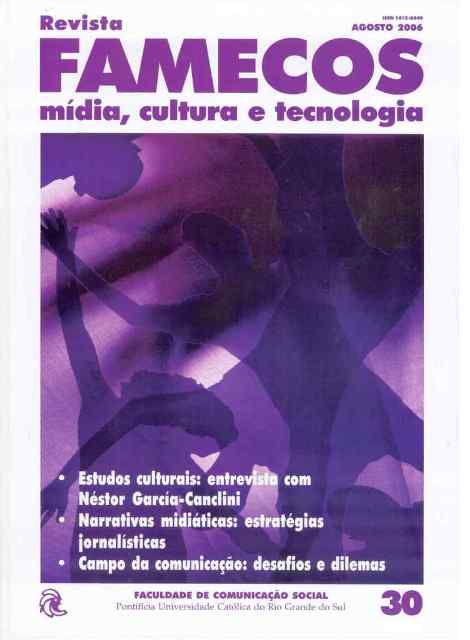The virtual victim and his otherness: the image of the criminal on the crime news
DOI:
https://doi.org/10.15448/1980-3729.2006.30.3377Keywords:
Communication, risk, virtual victimAbstract
This article conceptualizes the contemporary form of alterity production based on the analysis of the change in the image of the criminal in the crime report of the newspaper O Globo between the years 1983 and 2001. Considering that a significant part of the construction of alterity depends on the practices of attribution of responsibility , We propose that the change of image of the criminal is associated with the passage from norm to risk as the basic concept from which individuals in Western culture think the power of human action.Downloads
References
Foucault, M. História da Sexualidade I: a vontade de saber. 5 ed. Rio de Janeiro: Graal, 1984.
______. Vigiar e punir: nascimento da prisão. 14 ed. Petrópolis: Vozes, 1996.
______. A arqueologia do saber, 5 edition. Rio de Janeiro: Forense Universitária, 1997.
Garland, D. The culture of control : crime and social order in contemporary society. Chicago: University of Chicago Press, 2001.
Hacking, I. The taming of chance. Ideas in context. Cambridge [England]. New York: Cambridge University Press, 1990.
Hudson, B. Justice in the risk society : challenging and reaffirming justice in late modernity. London ; Thousand Oaks, Calif.: SAGE, 2003.
Luhmann, N. Risk: a sociological theory. Communication and social order. New York: A. de Gruyter, 1993.
Downloads
Published
How to Cite
Issue
Section
License
Copyright
The submission of originals to Revista Famecos implies the transfer by the authors of the right for publication. Authors retain copyright and grant the journal right of first publication. If the authors wish to include the same data into another publication, they must cite Revista Famecos as the site of original publication.
Creative Commons License
Except where otherwise specified, material published in this journal is licensed under a Creative Commons Attribution 4.0 International license, which allows unrestricted use, distribution and reproduction in any medium, provided the original publication is correctly cited.






